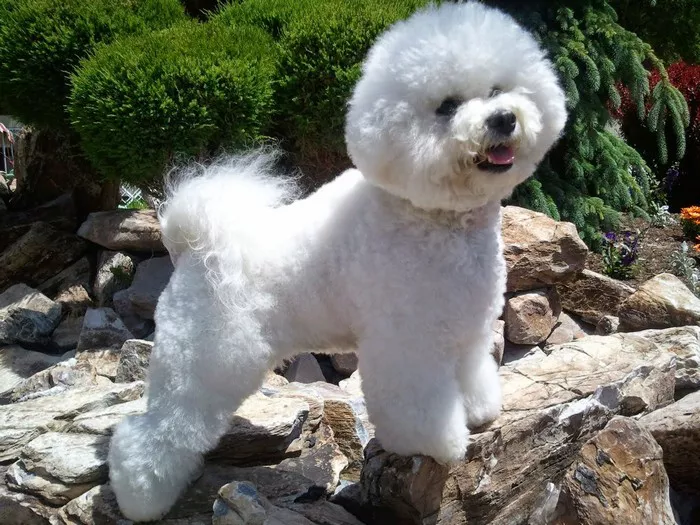Bichon Frise is a small, fluffy, and adorable breed of dog that is known for its charming personality and playful nature. They are a popular choice for many people due to their hypoallergenic coat, which makes them an ideal pet for those with allergies. One of the most common questions asked by potential Bichon Frise owners is what colors they come in. In this article, we will explore the different colors of Bichon Frise and what makes them unique.
History of Bichon Frise
Before we delve into the colors of Bichon Frise, it is essential to understand a little bit about their history. Bichon Frise is a breed that originated in the Mediterranean region and was popular with Spanish sailors who used them as companions on their long voyages. They were also popular with French royalty and were often seen in the courts of King Francis I and King Henry III. Bichon Frise was officially recognized by the American Kennel Club in 1972 and has been a popular breed ever since.
What Colors Do Bichon Frise Come In?
Bichon Frise is a breed that comes in a variety of colors, although some colors are more common than others. The most common color for Bichon Frise is white, which is often seen as their signature color. However, they also come in shades of cream, apricot, and gray. Some Bichon Frise may have markings of these colors on their fur, which can create a unique and beautiful look.
White Bichon Frise
As mentioned earlier, white is the most common color for Bichon Frise. White Bichon Frise is often seen as the classic look for this breed, and many people find them charming and adorable. White Bichon Frise has a pure white coat that is soft and fluffy, which makes them irresistible to pet and cuddle. Their fur requires regular grooming to maintain its pristine appearance.
Cream Bichon Frise
Cream Bichon Frise is another popular color for this breed. They have a light, creamy coat that is soft and fluffy, which makes them a popular choice for many people. Cream Bichon Frise is often seen as a more subtle and elegant alternative to the classic white Bichon Frise.
Apricot Bichon Frise
Apricot Bichon Frise is a less common color for this breed, but it is still a beautiful and unique option. They have a light, peachy-colored coat that is soft and fluffy, which makes them stand out from other Bichon Frise. Apricot Bichon Frise is often seen as a more playful and fun alternative to the classic white Bichon Frise.
Gray Bichon Frise
Gray Bichon Frise is a rare color for this breed, but it is still a stunning and unique option. They have a light, silver-gray coat that is soft and fluffy, which makes them stand out from other Bichon Frise. Gray Bichon Frise is often seen as a more sophisticated and refined alternative to the classic white Bichon Frise.
Markings on Bichon Frise
In addition to their base color, some Bichon Frise may have markings on their fur that add to their unique appearance. These markings can come in a variety of colors, including black, brown, and gray. Some Bichon Frise may have markings on their face, ears, or tail, which can create a distinctive look.
Conclusion
Bichon Frise is a breed that comes in a variety of colors, each with its unique charm and appeal. White is the most common color for Bichon Frise, but they also come in shades of cream, apricot, and gray. Some Bichon Frise may have markings on their fur, which can create a unique and beautiful look. Regardless of their color, Bichon Frise is a charming and playful breed that makes an excellent pet for anyone looking for a loyal and affectionate companion.
FAQs
1. What are the different colors of Bichon Frise?
While the American Kennel Club (AKC) breed standard for the Bichon Frise recognizes only white as the primary color, variations in shading may occur, including cream, apricot, or grayish tints around the ears or on the body. However, the coat should primarily be white overall.
2. What are the 4 types of Bichon Frise?
There aren’t distinct “types” of Bichon Frise, but there are four main Bichon breeds: the Bichon Frise, Bolognese, Havanese, and Maltese. These breeds share similar characteristics, such as a small size, a curly coat, and a lively personality.
3. Are Bichon Frise always white?
While the breed standard specifies white as the primary color for Bichon Frise, variations in shading, such as cream or apricot, may be present. However, these colors should be minimal, with white being the dominant color of the coat.
4. How can you tell if a Bichon Frise is purebred?
To determine if a Bichon Frise is purebred, it’s essential to look for certain physical traits outlined in the AKC breed standard, including a compact body, a plumed tail carried over the back, a black nose, dark round eyes, and a double-layered coat that is curly and white, with minimal shading. Additionally, obtaining proper documentation from reputable breeders or breed clubs can help confirm the dog’s pedigree.


